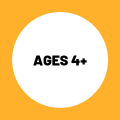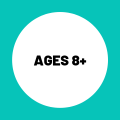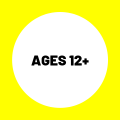STEAM Young Makers
STEAM/STEM - Digital making for Young Makers. Never too young to learn....
The main difference between STEM and STEAM is STEM explicitly focuses on scientific concepts. STEAM investigates the same concepts, but does this through inquiry and problem-based learning methods used in the creative process.
micro:bit GO Kit V2 (micro:bit V2 GO kit)
The BBC micro:bit is a pocket-sized codeable computer with motion detection, a built-in compass, LED display, and Bluetooth technology built in. V2 now with microphone and speaker
micro:bit V2 (20 units) classs bundle with Duracell batteries (mbit V2 classx20 bundle)
The BBC micro:bit is a pocket-sized codeable computer with motion detection, a built-in compass, LED display, and Bluetooth technology built in. V2 now with microphone and speaker
micro:bit V2 Essentials Kit with Jumpers and Duracell batteries (m:bit V2 Ess kit batt)
The BBC micro:bit is a pocket-sized codeable computer with motion detection, a built-in compass, LED display, and Bluetooth technology built in. V2 now with microphone and speaker
micro:bit V2 Essentials Kit with Jumpers (micro:bit V2 Ess kit)
The BBC micro:bit is a pocket-sized codeable computer with motion detection, a built-in compass, LED display, and Bluetooth technology built in. V2 now with microphone and speaker
micro:bit V2 Junior Kit (micro:bit V2 Junior)
The BBC micro:bit is a pocket-sized codeable computer with motion detection, a built-in compass, LED display, and Bluetooth technology built in. V2 now with microphone and speaker
BBC micro:bit V2.21 - Next Gen Classroom Pack(30pc) including watch straps (mbitV2.21 class30)
The micro:bit board is a product by the micro:bit Educational Foundation, the non-profit that aims to inspire every child to create their best digital future.
Kitronik Discovery Kit for the BBC micro:bit (micro:bit not included) (KT Discovery mbit)
The Kitronik Discovery Kit for BBC microbit is a great way to get started with both programming and electronics. The Kit contains five experiments that start very simply, building up to simulating real world systems as confidence grows.


























